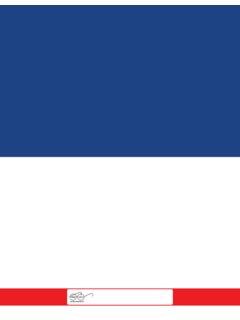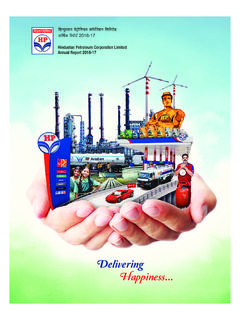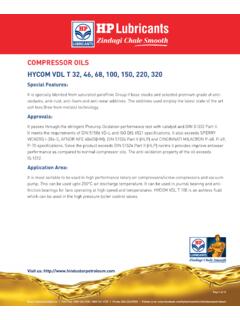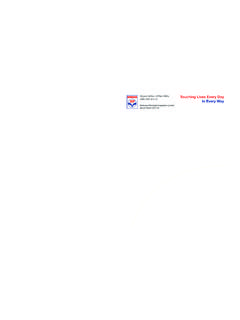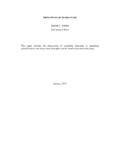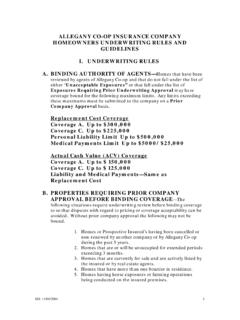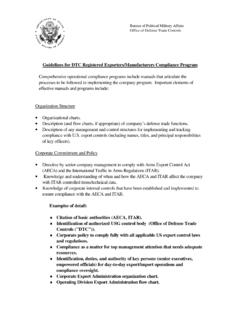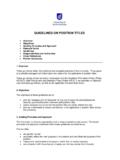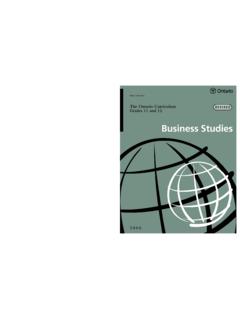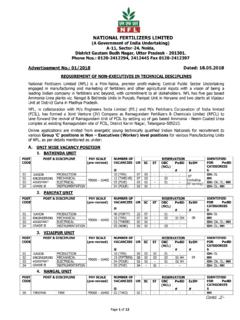Transcription of Marketing Discipline Guidelines - Hindustan …
1 Ver. 6 / Marketing Discipline Guidelines for RO / SKO Dealerships of Public Sector Marketing Companies Effective 8th January 2013 (Amended on ) Ver. 6 / 1 Marketing Discipline Guidelines 2012 RETAIL OUTLET DEALESHIP / SUPERIOR KEROSENE OIL DEALERSHIP INTRODUCTION The evolution of oil industry in India can be traced to the early 20th century when the industry began its operations through Superior Kerosene Oil (SKO) dealerships. In due course of time the petroleum business prospered and expanded and by independence the industry had commenced Marketing of Motor Spirit (MS) and High Speed Diesel (HSD). The network developed under private oil companies like Burmah Shell, Caltex and ESSO. In 1958, Indian Oil Corporation (IOC) was formed giving birth to the entry of the public sector in the petroleum business.
2 Thereafter with the nationalization of Burmah Shell, Caltex and ESSO in the 1970s, the concept of public sector oil companies came into being and the petroleum business prospered witnessing substantial growth. In 2001-02 the public sector oil Marketing companies (OMCs) had a network around 16000 retail outlets (ROs), 9000 LPG distributorships and 6500 SKO dealerships. The network has seen tremendous expansion to nearly 41000 RO dealerships, 11100 LPG distributorships and 6600 SKO dealerships as on The deregulation of the petroleum sector witnessed the entry of private players like Reliance, Essar and Shell in the petroleum sector who between themselves have setup nearly 3000 ROs. However, the dominance of the OMCs continued unabated in the retail market.
3 The Marketing Discipline Guidelines (MDG) which were formulated for the first time in 1981-82 helped the OMCs to maintain Discipline in the operation of retail network and provide high customer service standards. In recent times the Government as well as Industry has felt the need to review the MDG in view of the changing circumstances and market scenario. The need to set very high customer service benchmarks for OMCs and for their dealer network is the need of the hour. In view of this, after discussions at various forums, these Guidelines have been formulated. Ver. 6 / 2 I N D E X Chapter No. Sub-head Contents Page NO. 1 Procedure for handling of products at Retail Outlets by dealers 5 Receipt of product 5 Decanting of product 5 Stock / price controls 7 Quality / Quantity control measures 8 Observance of statutory & other regulations 9 Customer service & general amenities 11 2 Industry Guidelines for Sample collection and testing 13 Preamble 13 Drawal of samples 13 Drawal of samples by dealer 15 Drawal of samples by Oil Company representatives 16 General procedure for drawl of Samples 19 Sample containers to be used 21 Sealing of sampling containers 22 Sample tags 22 Retention of samples 22 Sample testing & results 23 3 Handling of MS / HSD / SKO at Company s storage points and Duties of Oil Companies 25 Quality / Quantity checks 25
4 Sealing / GPS 27 Training of dealer / dealer s staff 27 4 Maintenance of Company s equipments at Retail Outlets 28 Dispensing units Standardizations of report 28 Maintenance of pumps & other equipments 28 Rectification of defects in Dispensing units / pipeline / tanks 28 Detection of presence of water in tanks 29 5 Type of Irregularities at Retail Outlets ( MS / HSD) and SKO-LDO Dealerships 30 MS / HSD 30 Adulteration of product 30 Short delivery of products 31 Totalizer seals found tampaered with 32 Additional / unauthorized fittings / gears found in dispensing units 32 Unauthorized storage facilities / Interconnection 33 Unauthorized purchase / sales 33 Tank lorry carrying unauthorized product found decanting product into RO tanks 33 Refusal by the dealer to allow drawl of sample or carry out inspection 33 Non-availability of reference density 33 Ver.
5 6 / 3 Selling of normal MS/HSD as branded fuel 34 Stock variation of MS/HSD beyond permissible limits 34 Non-maintenance of inspection / stock / sales / other records 35 Overcharging in authorized selling prices 36 (a) Non provision of air, telephone, first aid, etc. 36 (b) Non provision of clean toilet 36 Non display of authorized selling prices of products 37 Automated Retail outlets 37 Miscellaneous 37 Payment of wages 38 Notes 38 6 Duties of SKO Dealers: Kerosene supplies under PDS 39 7 Mobile Laboratory 40 Introduction 40 Deployment 40 Inspection at Retail Outlets 40 Testing of Samples 40 Sampling Procedure 41 Clinical Tests 41 Certification 42 Note 43 8 Action to be taken by OMC under MDG 44 Note 44 Critical Irregularities 44 Major Irregularities 44 Minor Irregularities 46 Notes 47 Notes 47 Notes 47 Notes 48 Notes 48 Notes 48 Notes 48 Notes 48 Notes 48 Notes 49 Authority to Take Action 49 Appellate Proceedings 49 Irregularities Malpractices in respect of SKO Dealers 51 Annexure 1 Density Record 52 Annexure 2 Sample Label Supply Location 53 Annexure 3 Sample label TL retention sample 54 Annexure 4 Sample label sample drawn from RO 55
6 Annexure 5 Test to be carried out onMS / HSD Samples 56 Annexure 6 Maintenance report 57 Annexure 7 Method for determination of Ethanol content 59 Annexure 8 Shrinkage allowance sample calculation Illustration 62 Ver. 6 / 4 Annexure 9 Method for allowing Shrinkage Allowance in Stock Variation 63 Annexure 10 TVA Loss Sample calculation Illustration 64 Annexure 11 Mobile Lab Sample Tag 65 Annexure 12 Sample Details for MS 66 Annexure 13 Sample Details for HSD 68 Ver. 6 / 5 CHAPTER - 1 1. PROCEDURE FOR HANDLING OF PRODUCTS AT RETAIL OUTLET BY DEALERS It will be the responsibility of the Dealers to sell product of correct Quality & Quantity and provide excellent customer service.
7 RECEIPT OF PRODUCT At the time of arrival of tank lorry, the dealer should match following details mentioned on the Invoice with physical / actual parameters: i) Tank Lorry No. ii) Seal Number / Security Lock Number iii) No. of compartments and quantity/product contained therein iv) The time tank lorry left Supply Point v) Recorded Density at 15 Degree C vi) Dip rod with calibration certificate and other details as advised from Company from time to time. DECANTING OF PRODUCT The dealer to undertake the following actions: i) Park the tank lorry on level ground allow 10 minutes settling time. Before starting the operation on the tank lorry, proper earthing / bonding should be ensured. Portable fire extinguisher of DCP type should be kept near to tank lorry at a suitable distance.
8 All the tank lorry discharge hoses should comply with all the safety requirements, and under no circumstances, plastic/PVC hosepipes should be used. ii) Check condition of the seal / security lock on the tank lorry delivery manifold & manhole covers against those mentioned in the invoice. Ver. 6 / 6 iii) Release master valve levers to ensure product fills the pipelines, where tank lorries are normally calibrated with lines full, before checking dips (Refer Calibration Certificate). iv) Dealer to check that the Density of product @ 15 Degree C using ASTM Tables (53B) is within +/- Kg/M3 as compared with the challan density for ascertaining quality of product. v) Ask the tank lorry driver to produce certificate of calibration which would mention product level and proof level details.
9 Vi) Check Weights & Measures markings on the dip rod at the bottom as well as at the proof level. As an additional check, verify dip rod calibration with an standard measuring tape. vii) Check dips of the product in all compartments with the dip rod duly certified by Weights & Measures Department and provided with the tank lorry. Also check for presence of water in each compartment by water finding paste. Before commencing tank lorry decantation operation, the sales from the concerned underground tank at the Retail outlet should be stopped till the completion of decantation. viii) Having ascertained the quantity of the product by the above method, draw samples after draining approx. 20 liters of the product from the manifold from each compartment in a clear glass container for density/temperature for quality checks.
10 Ix) In case of doubt as to the quality of product, contact the Supply Location/concerned Area Field Officer for further instructions. x) After having ascertained quality as per (vii to ix) above, and prior to decantation, the dealer/his representative shall draw bottom samples from the Tank lorry and follow instructions as given in 3 tier sampling procedure (as explained in chapter-2). Ver. 6 / 7 xi) In the event of dip being short as per calibration certificate/water being detected with water finding paste, the short dip/quantity (including due to removal of water) should be made up by filling to the correct level through the dispensing pump and the quantity so filled should be recorded on the back of all the Invoice copies.
